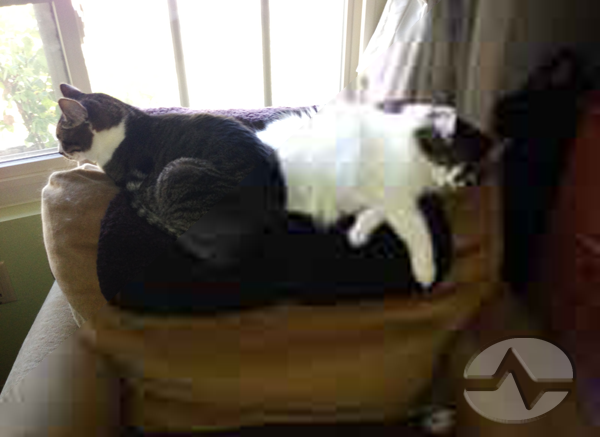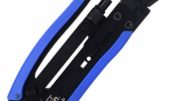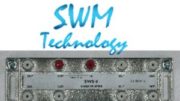Believe it or not, the image above is all the same resolution, from one end to another. But your eyes aren’t deceiving you… there’s a definite difference in quality between the part with the grey cat and the part with the white cat. This a perfect way to show that high resolution doesn’t always mean high quality.
Of course, the people who sell you TVs and streaming devices would really prefer you not know that. In fact, sometimes higher resolution seems to mean poorer quality. If you happen to compare episodes of Seinfeld on Comedy Central to what you see on Netflix in 4K, you’ll see what I mean. The Netflix presentation is dark, grainy, and undesirable. The Comedy Central presentation, which some say was mastered in 720p (not even 1080p), looks much better to me.
It’s all ones and zeroes
Digital signals, when you come right down to it, are nothing but ones and zeroes, and they can be manipulated a lot of different ways. You can take an image with a resolution of 1920×1080 (the resolution of most HD programs) and manipulate it so it takes 2.2 gigabits to show a second of programming, or you can tweak those numbers so it takes under one megabit per second. I’m talking about a 90%+ reduction in size. It’s done with fancy mathematics and the expectation that you won’t really notice what’s missing.
The size of a digital HD “stream” can be controlled by cutting all sorts of picture information out and by using advance compression that puts errors into the signal that you (hopefully) won’t see. If the signal is compressed too much, you get something like the image on the right side. If it’s done properly, you get something like the image on the left side.
Resolution vs. quality
It’s important to know about the difference between resolution and quality. You’ll notice that streaming services like Netflix advertise their resolution but they don’t advertise the size of their streams. People are more comfortable thinking in terms of SD vs. HD vs. 4K than they are about thinking of bitrates, gamut, and that sort of thing.
In fact, over-the-air broadcasting such as you can get from a TV antenna is going to be the best quality HD you’ll get, short of a Blu-ray disc. That’s because the relatively simple math used for over-the-air digital signals can only compress them down to about 19 megabits per second. Without excess compression, over-the-air signals look sharper and cleaner than the same signals on cable. In fact cable companies and streaming companies (like Hulu) actually get their signals using antennas then decompress and re-process those signals, taking quality out so that the result can never be as good as the original.
I’ll give it to streaming, though.
In the last five years, streaming providers have upped their game when it comes to quality. It’s a little easier for streaming apps to improve, because they can implement new compression schemes. Still, you have heard of older TVs and streaming devices dropping support for some apps in the last several years. That’s because those devices can’t support the new streaming methods.
It’s reached the point where a streaming presentation can be better than an over-the-air one. This isn’t the fault of the station or of a satellite provider like DIRECTV. The problem is that Disney-owned stations like ABC affiliates and ESPN broadcast in 720p while their content is produced in 1080p or 1080i. The quality of the broadcast show is lower because it’s designed to be.
What about DIRECTV 4K?
DIRECTV’s 4K programming is top-of-the-heap. It’s presented at a constant bitrate so you get the maximum quality all the time. DIRECTV can do this because they have plenty of bandwidth on their satellites. Streaming providers have to worry about bottlenecks all the way across the internet, and DIRECTV doesn’t.
If you’re interested in an upgrade so that you can get the best possible quality, shop at Solid Signal or call our experts at 888-233-7563 to find out more!





